#charles de steuben
Text
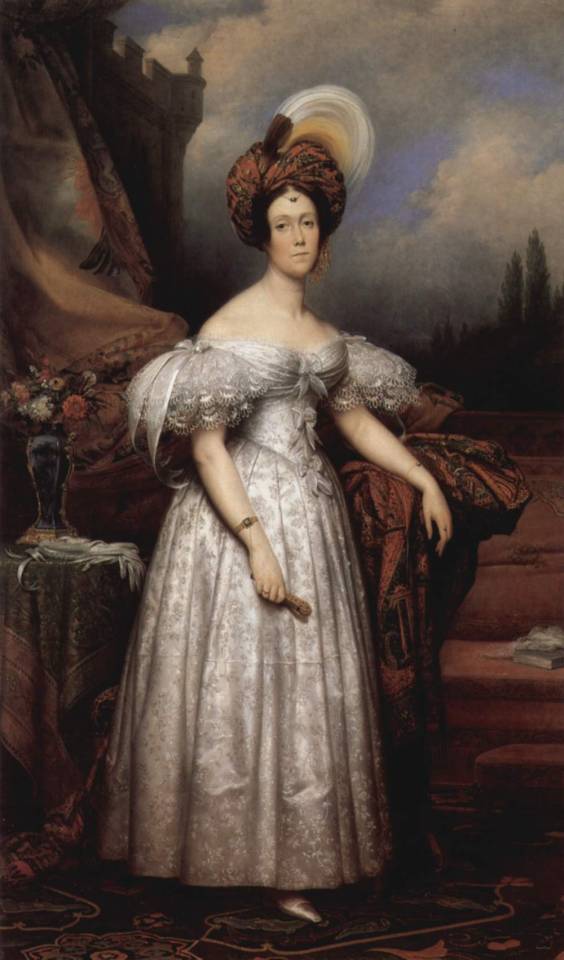
Marquise De Béthisy Als Orientalin painted by Charles de Steuben (1788 - 1856)
#art history#painting#art#artwork#museums#history#culture#vintage#curators#romanticism#charles de steuben
55 notes
·
View notes
Text
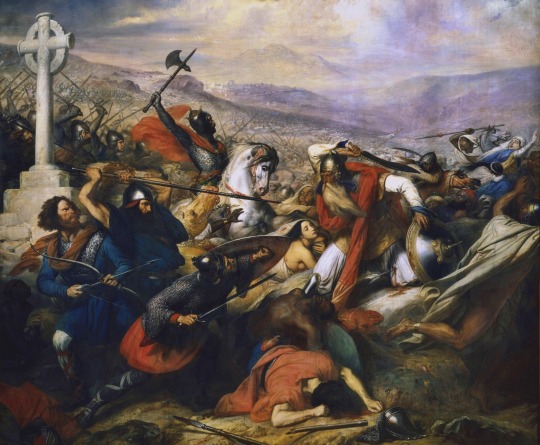
The Battle of Tours, October 732 by Charles de Steuben
#battle of tours#battle of poitiers#art#charles de steuben#umayyad#invasion#gaul#franks#frankish#charles martel#aquitainian#muslim#christian#history#europe#european#germanic#abdul rahman al ghafiqi#umayyad caliphate#france#western europe#christianity
61 notes
·
View notes
Text
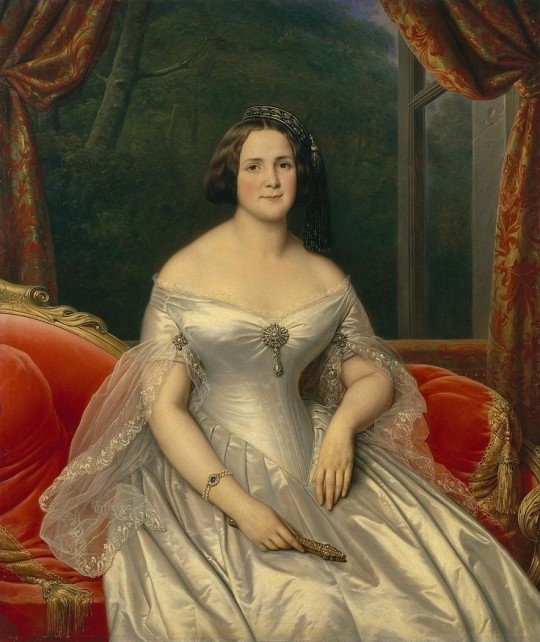
Charles de Steuben • (French, 1788–1856)• Portrait of Anna Benardaki • 1844 • Hermitage Museum, St. Petersburg, Russia
#art#painting#portrait#french artist#la robe blanche#white dress#women in white#fine art#french painter#19th century art#women in paintings#charles de steuben
17 notes
·
View notes
Text
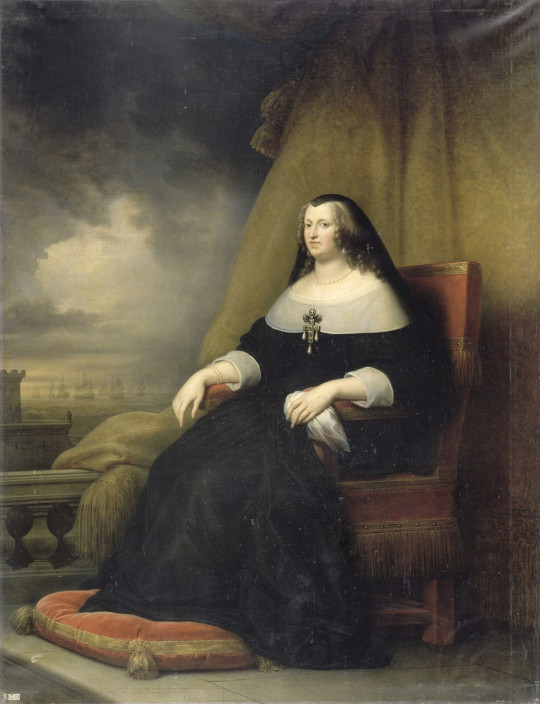
Anna of Austria. By Charles de Steuben.
#charles de steuben#royaume de france#anne d'autriche#reine de france#vive la reine#infante d'espagne#maison de habsbourg#régente de france#maison de bourbon#anne of austria
6 notes
·
View notes
Text
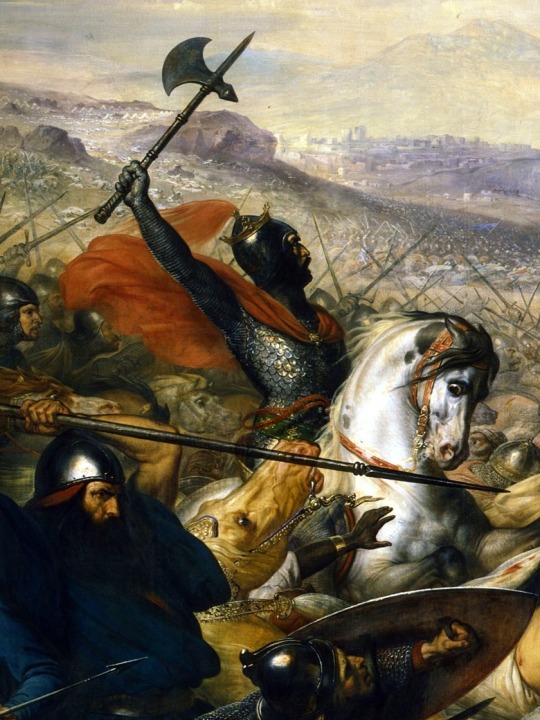
Bataille de Poitiers (Battle of Poitiers) [detail] by Charles de Steuben (1837)
95 notes
·
View notes
Text

Battle of Poitiers, October 732 (Charles de Steuben, 1837)
6 notes
·
View notes
Photo
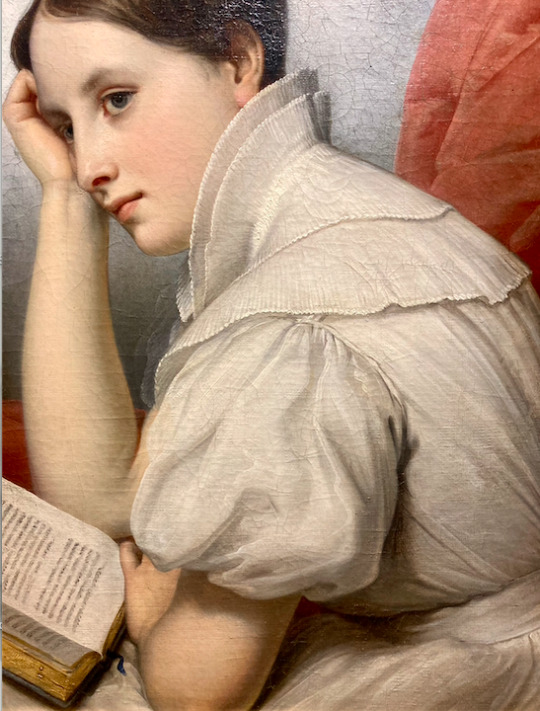



#1. FC Nürnberg#Wir sind der Club#und trotz der Ausfälle klar besser also macht doch bitte endlich die SchTore!#2. Bundesliga#Fußball#Kunst#Charles de Steuben#Portrait
2 notes
·
View notes
Text
04 Works, The art of War, Charles de Steuben, Eugène Delacroix and Julius Schnorr von Carolsfeld's Bataille de Poitiers, with Footnotes
Charles de Steuben (1788–1856)Bataille de Poitiers, en octobre 732, c. 1837Oil on canvasheight: 4.6 m (15.2 ft); width: 5.4 m (17.7 ft)Palace of Versailles
Muslim empire reaches its furthest extent. Battle of Tours prevents further advance northwards…
Please follow link for full post
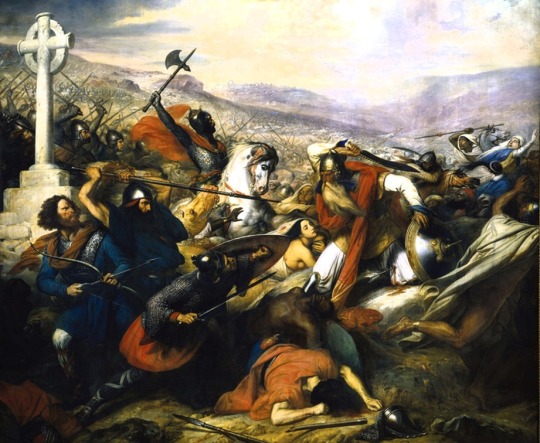
View On WordPress
#Arthistory#Artists#Biography#Charles de Steuben#fineart#footnotes#History#Julius Schnorr von Carolsfeld#Paintings#war#Zaidan
1 note
·
View note
Photo

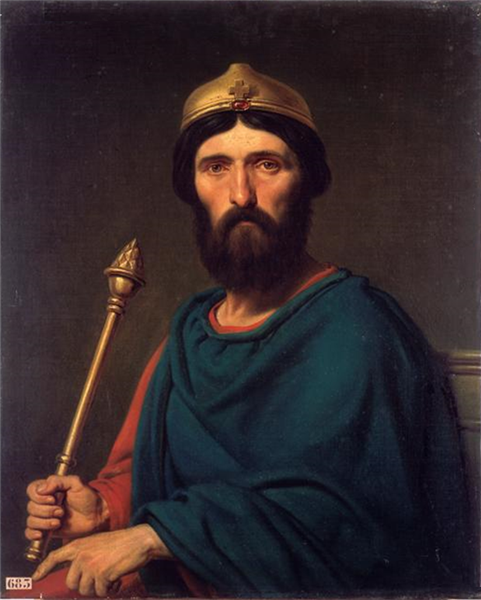
Home Alone dir. by Chris Columbus, written/prod. by John Hughes (1990) + Louis IV of France by Charles de Steuben
The English speaking peoples bring other preconditions to what we may call the people's will, the voting system, than, say, the French — the Latin peoples in general. The Latin peoples, especially the French, certainly carried out the revolution of the eighteenth century, but the French people today are more royal than any other. To be royal doesn't only mean to have a king at the top. Naturally a person whose head has been cut off cannot run around; but the French as a people are royal, imperialistic, without having a king. It has to do with the mood of soul. This “all are one” feeling, the national consciousness, is a real remnant of the Louis IV mentality.
—Rudolf Steiner, The History and Actuality of Imperialism: Lecture I
#Louis IV#Louis IV of France#anthroposophy#spiritual science#Charles de Steuben#John Hughes#Macaulay Culkin#Chris Columbus
1 note
·
View note
Photo





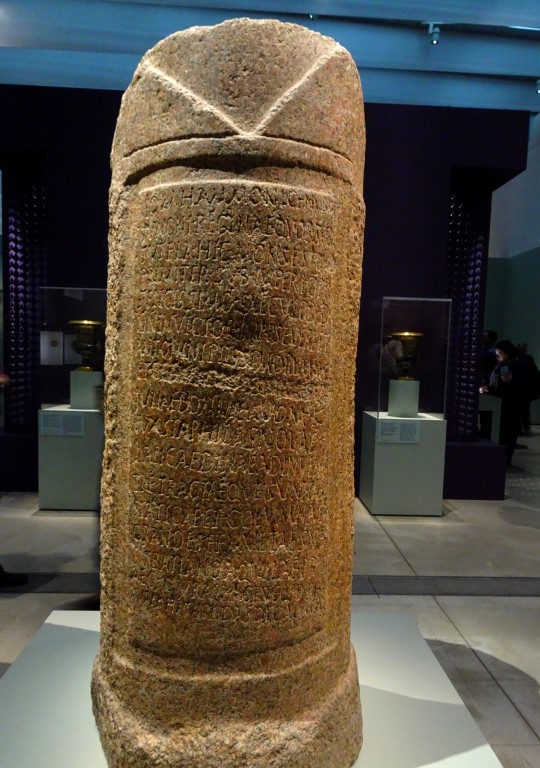
Au Louvre-Lens, il y avait une expo fort intéressante : “Champollion - La Voie des Hiéroglyphes”, sur l’homme, son époque, l’image de l’Egypte en Europe avant l’Egyptologie....
- gravure de Caroline Hulot d'après Louis-Léopold Boilly - “Le Libéral" et "L'Ultra”
- Charles-Philippe Larivière - "Portrait d'Ibrahim Pacha”
- Auguste Couder - "Méhémet Ali, Pacha d'Egypte”
- Charles de Steuben - “Portrait de François Arago”
- statue en tailleur du Chef du Trésor Iay - Moyen Empire 1900 av. J-C.
- autel de Philae, inscriptions romaines - 205 av. J-C.
#louvre-lens#expo#champollion#la voie des hiéroglyphes#égypte#égypte antique#égyptologie#archéologie#caroline hulot#caricature#libéral#ultra#louis-léopold boilly#charles-philippe larivière#auguste couder#couder#boilly#pacha#méhémet ali#charles steuben#steuben#ibrahim pacha#françois arago#iay#moyen empire#autel#philae#philaë#barbe#scribe
7 notes
·
View notes
Quote
Although all of the officers signed to resolve, he [General Lee], along with von Steuben, Duportail, Wayne, Paterson, and Lafayette, disagreed with the number of troops being used as inadequate and suggested that number be raised to at least 2,000, and preferably 2,500 or more. He was dissatisfied that he and the other officers who disapproved of the final plan, were being ignored, and addressed the issue in a letter to Washington.
Forgotten Patriot: The Life and Times of Major-General Nathanael Greene by Lee Patrick Anderson, pg. 156, going over the Lee debacle.
#Forgotten Patriot: The Life and Times of Major-General Nathanael Greene#Lee Patrick Anderson#Charles Lee#Baron von Steuben#Louis Lebègue Duportail#Anthony Wayne#William Paterson#Marquis de Lafayette#pg. 156
7 notes
·
View notes
Text

Portrait of Countess D'ash painted by Charles de Steuben (1788 - 1856)
#art#art history#artwork#culture#curators#history#museums#painting#romanticism#vintage#charles de steuben
53 notes
·
View notes
Text

Eugene de Beauharnais receiving his father's sword from Napoleon Bonaparte
by Charles de Steuben
121 notes
·
View notes
Text

Detail of “The Death of Napoleon” by Charles de Steuben. Arthur Bertrand is peeking over Napoleon’s left arm.
Napoleon was fond of all the children in his entourage on St. Helena, but Arthur Bertrand (born on January 17, 1817) became his favourite. Glimpses of the two of them provide an amusing contrast to the often formidable portrait of Napoleon as Emperor.
One day, the Emperor wanted to have the noisy company of Countess Bertrand’s children at lunch. Saint-Denis told me the luncheon had gone very well, but that towards the end they started throwing bread balls at each other. The Emperor had taken the youngest on his knees, and was kissing and teasing him as he was pulling at his ears.
When Napoleon insisted that Arthur's sister Hortense have her ears pierced in an outdoor operation, Arthur was greatly alarmed.
He clinched [sic] his fists, and stamped with indignation, declaring that he would not allow his sister to be hurt. ‘You little rogue,’ said Napoleon, ‘if you are not quiet, I will have your ears bored also. Come, be obedient.’
In January 1821 Napoleon had a seesaw installed in the Longwood billiard room. Napoleon at first claimed it was a swing to amuse the children. He then admitted it was for his own use, to get more exercise. General Henri Bertrand recounts:
Arthur Bertrand went to see the Emperor, who showed him the seesaw and told him that it was a gun. Afterwards he and the Grand Maréchal got up on it to amuse the child. Napoleon had been on it for a quarter of an hour in the morning and didn’t feel any the better for it.
In the best-known vignette, Napoleon gives Arthur a pony. This was recounted by Napoleon’s first valet, Louis-Joseph Marchand.
A city resident had come to Longwood riding a small pony, and Arthur…asked the Emperor to buy it for him. As he spoke only English, the Emperor told him in that tongue: ‘Come at noon.’ But as was his habit, he went back inside, leaving the children to continue their games, got undressed and soon fell asleep. I was leaving the Emperor’s bedroom quietly when the fort cannon announced the hour of noon, and in the bathroom I found young Arthur fighting with Noverraz to enter the Emperor’s bedroom. I feared my refusal would make him cry and awaken His Majesty: I therefore made him understand that the Emperor was sleeping, and if he agreed to be good, I would let him enter and wait for His Majesty to awaken. ‘Yes,’ he answered; I took him by the hand, he went near the bed where the Emperor was resting, saw he was sleeping, then sat on the rug and stayed with me almost an hour, playing alone and noiselessly. When the Emperor awoke, he was quite surprised to find him there: ‘There you are, Arthur, what do you want, my boy?’
‘You tell me gun fire.’ I was not aware of the promise made to him.
‘What does he say?’ the Emperor asked.
‘He is telling Your Majesty that he told him to come back when the gun went off.’
‘Take him to Montholon, to find out what he wants.’ At that very moment, Count de Montholon was announced at the Emperor’s bedroom; he learned that during lunch he had told the child to come at noon, and he would buy him the little pony. ‘Gun fire’ was the cannon announcing that hour, and he came to claim the promise made to him. ‘Indeed! What a memory,’ said the Emperor, ‘is the horse still there?’ Count de Montholon, who had discussed the price with the owner, assured him it was. ‘But,’ said the Emperor, caressing the child and embracing him, ‘do you have any money?’
‘Yes, I have two dollars.’
‘That is not enough.’
‘Papa give everything!’
‘But Papa Bertrand has no money.’
‘I have plenty gold.’
‘Will you be good?’
‘Yes.’
“How much does he want for this horse?’ the Emperor asked General Montholon.
‘Fifty louis [1000 francs], Sire.’
‘Give this boy 1,200 francs,’ the Emperor said to me. I went upstairs to get the money that was locked up in a bag. The child was four years old, and on seeing me arrive, he held out his pinafore to catch the money. ‘You won’t be able to carry it.’
‘Yes, yes.’ I put the money gently in his pinafore to test his strength. He turned rapidly and, accompanied by Count de Montholon, he went to purchase the horse he wished to buy. Riding his horse, and held up by Count de Montholon, he came back almost immediately to the Emperor’s door, to thank His Majesty. Later on, having fallen from the horse, he no longer wanted it and switched back to his burro, a much quieter mount and more responsive to his wishes. The horse was given to Napoleon Bertrand, the eldest of the children, who sometimes accompanied the Emperor when his mother rode in the carriage with him.
For more about Arthur and his family, see "Napoleon and Arthur Bertrand."
65 notes
·
View notes
Photo
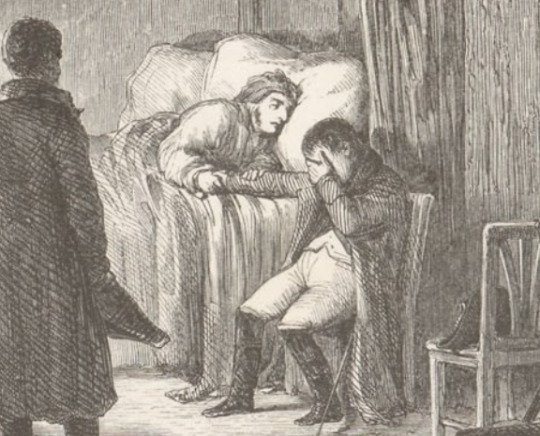

D. Boyer, “Mort de Duroc” (detail), 19th century. Bibliothèques de la metropole clermontoise.
Charles Steuben, “Le grand maréchal Bertrand pleurant près du corps de Napoléon,” 19th century. RMN-Grand Palais, Musée des châteaux de Malmaison et de Bois-Préau.
#the obligatory sad post for may 23rd#napoleon#duroc#bertrand#not my favorite depiction of duroc's deaathbed but the poses are a better parallel in this one
71 notes
·
View notes
Photo

Calvary by Charles de Steuben
#Jesus Christ#The Lord#Jesus of Nazareth#Jesus the Christ#Lord Jesus Christ#Son of God#Son of Man#The Messiah#Christ the Lord#Man of Sorrows#The Lamb of God#crown of thorns#Calvary#The Passion of Christ#The Passion of Jesus Christ#biblical art#Christian art#religious art#Christianity#faith#art
59 notes
·
View notes